Public Health Q & As
Marcella Nunez-Smith
 COVID-19 Health Equity Task Force Chair Marcella Nunez-Smith, MD, MHS — an associate professor of medicine, public health and management and associate dean for health equity research at Yale School of Medicine — spoke with The Nation’s Health about the task force and her work as a senior advisor to the White House COVID-19 Response Team
COVID-19 Health Equity Task Force Chair Marcella Nunez-Smith, MD, MHS — an associate professor of medicine, public health and management and associate dean for health equity research at Yale School of Medicine — spoke with The Nation’s Health about the task force and her work as a senior advisor to the White House COVID-19 Response Team
Where do we begin as a nation to address the persistent racial and ethnic disparities in this country?
We didn't get to this place of deep entrenched inequities across every sector overnight. There's a lot we need to do urgently, but we have to take a long view. It's going to take time to reverse the harms that have come from the structures and policies and processes that created these inequities in the first place. I don't think we have the luxury of saying, “first we will tackle this, then we tackle that.”
Read the full Q&A with Nunez-Smith in The Nation's Health.
Cheryl Clark
 Cheryl Clark, MD, ScD, principal investigator of community and participant engagement for the New England hub of the All of Us Research Program and an associate physician at Brigham and Women’s Hospital and assistant professor of medicine at Harvard Medical School, joined All of Us in its pre-launch stages to help design strategies for meaningful relationships with program participants.
Cheryl Clark, MD, ScD, principal investigator of community and participant engagement for the New England hub of the All of Us Research Program and an associate physician at Brigham and Women’s Hospital and assistant professor of medicine at Harvard Medical School, joined All of Us in its pre-launch stages to help design strategies for meaningful relationships with program participants.
How does the All of Us program benefit people and communities of color in particular?
I have not seen a program that has had this scale and scope of work around precision medicine that also has an equity focus. It’s that commitment to diverse populations that made me want to participate.
We’re now coming up on two years of the COVID-19 pandemic and very public murders of African Americans that have raised awareness of the way that science, health and public health don’t have the information that we need to understand how both disease processes as well as prevention happen in diverse groups.
We have enrolled more than 400,000 out of a million participants in the program. Fifty percent of those come from a race or ethnic category that traditionally hasn’t been included in health research. Being able to have the information — to have a deep investment in collecting the data that we need in diverse populations — is an important stepping stone to being able to ask the kinds of questions that matter to diverse groups...
Read the full Q&A with Clark in The Nation's Health.
Ninez Ponce
 Ninez Ponce, PhD, MPP, director of the University of California-Los Angeles Center for Health Policy Research and a professor at the university’s Fielding School of Public Health, spoke with The Nation's Health about collecting and reporting more targeted health data on Asian Americans, Pacific Islanders and Native Hawaiians and how the COVID-19 pandemic, which has disportionately impacted some populations, has provided ample evidence of why more focused data is needed.
Ninez Ponce, PhD, MPP, director of the University of California-Los Angeles Center for Health Policy Research and a professor at the university’s Fielding School of Public Health, spoke with The Nation's Health about collecting and reporting more targeted health data on Asian Americans, Pacific Islanders and Native Hawaiians and how the COVID-19 pandemic, which has disportionately impacted some populations, has provided ample evidence of why more focused data is needed.
Who is considered to be an Asian American, statistically speaking?
For statistical purposes, or at least what has been recordable in the U.S. census and the American Community Survey, there’s at least 20 groups…but there are more than 20 Asian countries. And also within countries, there are also some subdesignations. So, for statistical purposes, it is anyone who has origins from East Asia, Southeast Asia and the Indian subcontinent.
However, in 1997, the U.S. Office of Management and Budget Directive 15 specifically “unlumped” Asian with Native Hawaiian and Pacific Islander. Prior to that, Asians and people from Pacific islands and Native Hawaiians were all put together in what we were calling the API, the Asian Pacific Islander category. It’s a construct from the federal government.
Read the full Q&A with Ponce in The Nation's Health.
Adrian Hill

Adrian Hill, FMedSci, FRCP, FRS, is director of the Jenner Institute and co-director of the Oxford Martin Program on Vaccines at Oxford University. He co-led research on the Oxford-AstraZeneca COVID-19 vaccine. In April, his team announced that a candidate malaria vaccine had achieved a 77% efficacy in early clinical trials. The vaccine is now in Phase III clinical trials involving a larger population and additional benchmarks on safety and effectiveness.
What makes this latest attempt at a malaria vaccine significant?
There is no malaria vaccine licensed in any country, and people have been trying to do this for over 100 years. This has been a tough problem to crack.
This is the first time that any vaccine has reached the level of efficacy that the World Health Organization have specified they would like to see for a vaccine to save lives, particularly for use in children, where the highest disease burden is to be found.
That said, we’re not at 100%. But then, no vaccine is 100% effective. Getting to 77% is a substantial step forward...
Read the full Q&A with Hill in The Nation's Health.
Linda Degutis and Howard Spivak
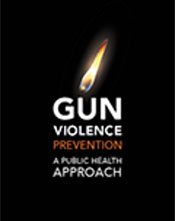 As mass shootings and everyday gun violence continue to shock the nation, Linda Degutis, DrPH, MSN, and Howard Spivak, MD — co-editors of the APHA Press book "Gun Violence Prevention: A Public Health Approach" — talk about the importance of finding common ground with U.S. gun owners, the proliferation of violence, and how to approach the problem through a public health lens.
As mass shootings and everyday gun violence continue to shock the nation, Linda Degutis, DrPH, MSN, and Howard Spivak, MD — co-editors of the APHA Press book "Gun Violence Prevention: A Public Health Approach" — talk about the importance of finding common ground with U.S. gun owners, the proliferation of violence, and how to approach the problem through a public health lens.
What is a public health approach to gun violence?
Spivak: If you want to change things, you have to work at the local, state and federal levels. We have a complicated system of laws, which is a strong argument for a public health approach that comes at the issue from multiple directions and isn’t looking for a magic bullet. You don’t fix complex problems with a single simple solution. A public health approach is comprehensive.
Degutis: Gun violence is a public health problem because so many people die, are injured, have long-term disabilities, mental health issues as a result. The preference is to stop gun violence before it happens. That takes a multi-sector approach with public health acting, perhaps, as a convener to help people on different sides of the issue work together on prevention. And we have to base our approaches on evidence that they work, not on how good they feel.
Read the full Q&A with Degutis and Spivak on Public Health Newswire.
Shankar Vedantam
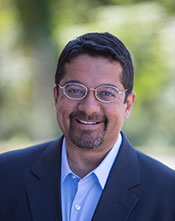 The keynote speaker for APHA's 2020 Annual Meeting and Expo opening session, Shankar Vedantam is a National Public Radio correspondent and host of the "Hidden Brain" podcast. The Nation's Health spoke with him about how biases shape human behaviors in the context of issues and events shaping public health this year.
The keynote speaker for APHA's 2020 Annual Meeting and Expo opening session, Shankar Vedantam is a National Public Radio correspondent and host of the "Hidden Brain" podcast. The Nation's Health spoke with him about how biases shape human behaviors in the context of issues and events shaping public health this year.
COVID-19 will likely still be with us in the U.S. even after a safe and effective vaccine is administered. Many people will probably still practice better hygiene in coming years, but what other ways might human behavior change given the broad impact of the pandemic on people's lives?
Beyond large-scale changes, the pandemic has certainly brought out some of the best and words in people. (Some) human beings have responded with great generosity, while others have responded with fear and suspicion.
Viruses have long been adept at identifying fault lines in societies, of revealing vulnerabilities in our cultures and in the underlying structures of societies. The optimistic side of me wants to believe we will learn from this pandemic, and that we will work to build a more equal world where we recognize we really are all in this together.
Read the full Q&A with Vedantam in The Nation's Health.
Jacqui Patterson
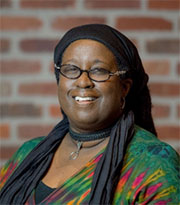 In the U.S., racism is reflected in the very air people breathe. Because of structural racism, minorities have had to live in unhealthy areas near power plants and industries that pollute the air. Blacks, Hispanics and Asians have a higher risk of premature death from particle pollution than whites in the U.S. The Nation’s Health spoke with NAACP Environmental and Climate Justice Program Director Jacqui Patterson, MPH, MSW, about racial and energy justice.
In the U.S., racism is reflected in the very air people breathe. Because of structural racism, minorities have had to live in unhealthy areas near power plants and industries that pollute the air. Blacks, Hispanics and Asians have a higher risk of premature death from particle pollution than whites in the U.S. The Nation’s Health spoke with NAACP Environmental and Climate Justice Program Director Jacqui Patterson, MPH, MSW, about racial and energy justice.
What is energy justice, and how does it fit within the wider environmentalist movement?
Energy justice is about shifting the undue burdens that people of color face in terms of being impacted by the pollutants from energy production.
Whether it’s coal-fired power plants, pipelines, oil and gas refineries, fracking and incinerators — all the different ways that digging, burning and dumping disproportionately affects our communities.
Those types of environmentally damaging practices and facilities are not only harming our environment and contributing to the greenhouse gas emissions that advance climate change, but they are also disproportionately located in low-income communities and in communities of color.
Read the full Q&A with Patterson in The Nation's Health.
Carter Blakey
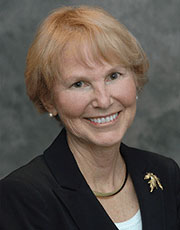 Carter Blakey is deputy director of the Office of Disease Prevention and Health Promotion at the U.S. Department of Health and Human Services. The office manages the Healthy People initiative, which since 1980 has supported health improvements in the U.S. by setting objectives to meet over the next decade, tracking prevention efforts and measuring success. State and local health programs use the objectives as a benchmark to learn how their communities compare and guide their work. On Aug. 18, the office launched Healthy People 2030, which boasts new objectives and emphases.
Carter Blakey is deputy director of the Office of Disease Prevention and Health Promotion at the U.S. Department of Health and Human Services. The office manages the Healthy People initiative, which since 1980 has supported health improvements in the U.S. by setting objectives to meet over the next decade, tracking prevention efforts and measuring success. State and local health programs use the objectives as a benchmark to learn how their communities compare and guide their work. On Aug. 18, the office launched Healthy People 2030, which boasts new objectives and emphases.
How will Healthy People 2030 help reduce health disparities in the face of COVID-19?
Over the next several months, we will start to add health disparities data to our website. We’re working with the HHS Office of Minority Health and CDC’s National Center for Health Statistics to examine how to analyze and display this data in a way that empowers users to make decisions.
For example, one of our objectives related COVID-19 aims to increase the proportion of adults with broadband internet. Access to broadband internet has been crucial to maintaining work, education and health care for many Americans during the pandemic. Disparities data for this objective will help inform where to target efforts to increase access to broadband.
Many of our objectives related to COVID-19 are developmental or research objectives, meaning that they represent national priorities, but don’t yet have baseline data or evidence-based resources that meet the criteria of our core — or measurable — objectives.
Read the full Q&A with Blakey in The Nation's Health.
Keon Gilbert
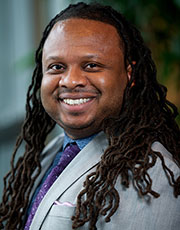 Keon Gilbert, DrPH, MPA, MA, is an associate professor in behavioral science and health education at Saint Louis University’s College for Public Health and Justice, and co-editor of “Racism: Science & Tools for the Public Health Professional,” published by APHA Press. The death of George Floyd at the hands of Minneapolis police officers in May sparked a wave of protests around the nation as well as calls for police reform and interventions to root out systemic racism. Gilbert talks about social change and racism in America.
Keon Gilbert, DrPH, MPA, MA, is an associate professor in behavioral science and health education at Saint Louis University’s College for Public Health and Justice, and co-editor of “Racism: Science & Tools for the Public Health Professional,” published by APHA Press. The death of George Floyd at the hands of Minneapolis police officers in May sparked a wave of protests around the nation as well as calls for police reform and interventions to root out systemic racism. Gilbert talks about social change and racism in America.
Where does systemic racism cut the deepest in America?
It’s really hard to say. And the reason why I say that is because it’s embedded in so many systems that work together to produce systemic racism.
I am reminded of a quote from the writer Audre Lorde: “There is no such thing as a single-issue struggle, because we do not live single-issue lives.”
We can do an analysis, an antiracist analysis, for example, within institutions, but it’s very difficult to do that unless you start to look at the overlap or the interconnectedness between one institution and another.
You have to be able to look across systems. And that’s the difficulty of unpacking systemic racism.
Read the full Q&A with Gilbert in The Nation's Health. And tune in to Reborn Not Reformed: Re-Imagining Policing for the Public's Health, the third in APHA's Advancing Racial Equity webinar series.
